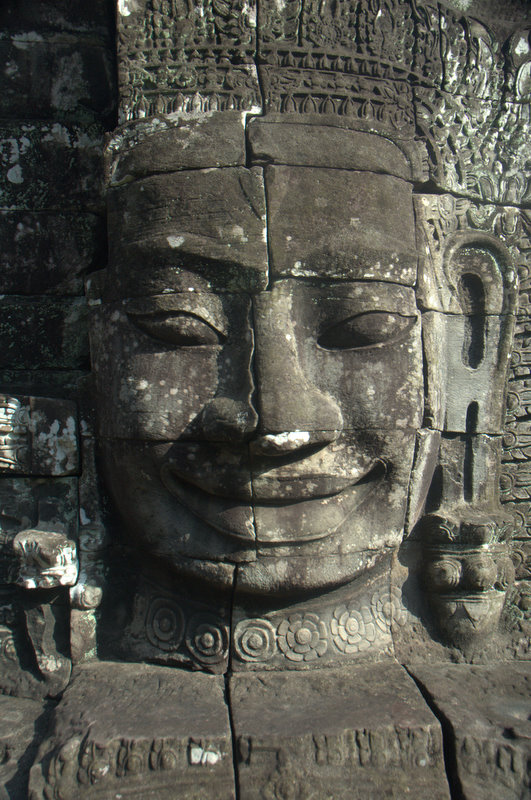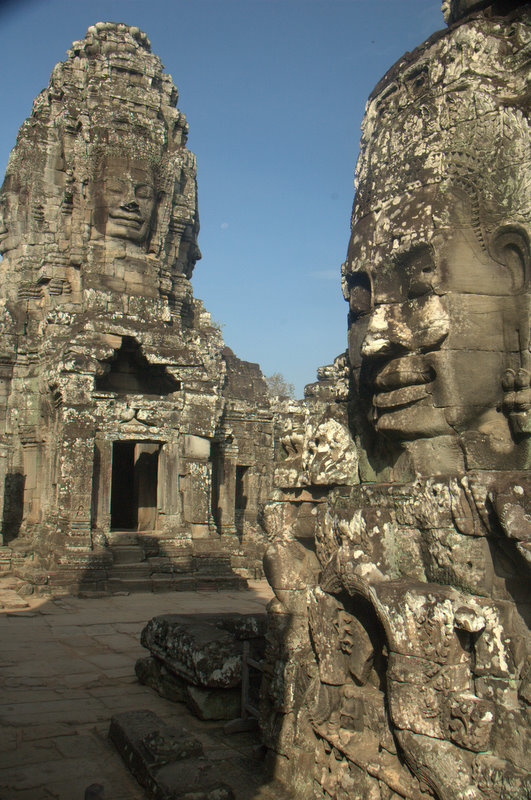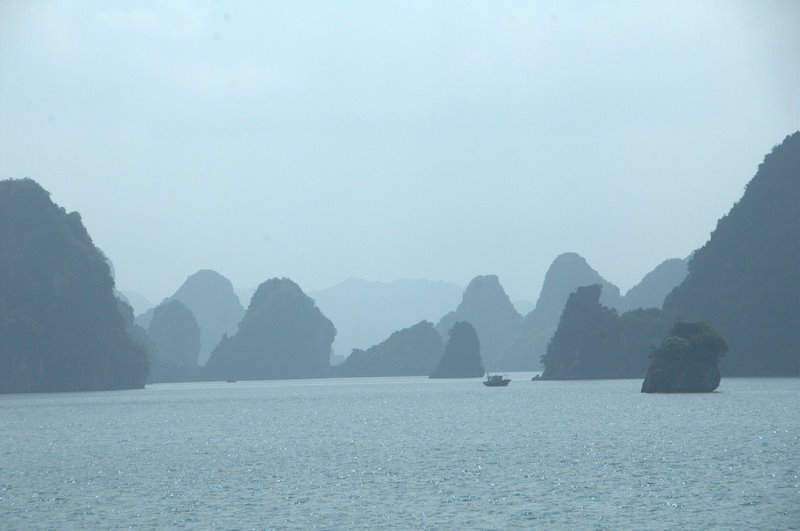Camping In The Outback Of Australia
We have been having quite a good time in Australia. Prior to taking this long trip, I think our favorite countries were arguably Chile and China; Australia is putting up a good competetive spirit.
We arrived in Melbourne from Singapore, a bit fatigued. For one thing, we stopped over in Darwin, at 4 am, and didn't board our flight for Melbourne until 7:30 am; also, there is a four hour time difference between Melbourne and most of SE Asia. Our trip was quite nice regardless, and a testament to how good Jetstar Airlines is, even though it is a low-fare airline. Our adventure of the day was only beginning, we had rented a car, and so we picked up our little Hyundai Getz from the terminal. I guess I'd been aware that people drive on the wrong (left) side of the road here in Oz, a practice taken from the Brits, who've spread their bad habits worldwide. I'd prepared myself for it, but there is nothing like the real thing, especially when the first couple of hours trying out something is on a very busy freeway. To make it all more interesting, of course the Getz had to be a manual, so I got to practice shifting with my left hand. It's a good thing that I knew how to drive a stick shift prior to this trip, otherwise it would have been too much.
We managed to figure it out fairly quickly, and as it turns out, driving on the freeway is actually easier than driving on city streets; at least on the freeway, everyone is driving in the same direction, even if they are on the left side of the road. We got a bit lost, heading west for about 40 km before realizing that we needed to be going east. Eventually, we arrived at the home of an Aussie couple we'd met in Granada, Spain, named Doug and Monique. They were really nice and welcoming, and there is nothing quite as grand as coming into a country and being met by local people. We stayed in their house for two nights, and both nights they took us out to tour different parts of Melbourne. Again, if you are exploring a city by yourself, there are many parts that will be missed compared to being in the company of locals who know the good neighborhoods, streets, restaurants and bars. Doug and Monique had just finished an 18-month world trip a few weeks before we arrived, so they were acutely aware of our needs - a laundry machine, cheap eats, those sorts of things, and they were very accomodating. I only hope they can visit us in the US so that we'll be able to return the (huge) favor.
From Melbourne, we set out west to the Great Ocean Road, which runs down along the coast southwest of Melbourne. It passes through little towns like Apollo Bay, and passes through several national parks like Otway National Park and the Twelve Apostles Nat'l Park. We spent our first night in a little campground just outside of Apollo Bay where koala bears made their distinct grunts above our tents, and several species of parrots flew around, tame enough to land on my shoulder. The drive there was really beautiful, the sun was shining brightly, and the waters were brilliantly turquoise along the rocky shoreline. There were many beaches along the road, most of them deserted, all of them with golden-white sand and very inviting. The next day we continued south to reach as far as the Twelve Apostles, which highlights rock outcroppings away from the high cliffs; it was rainy and foggy, which made the outcroppings very mysterious and beautiful. We found a free campsite in the national park, and we ended up staying there for three nights. A river ran next to the campground, and I fished a bit, though quite unsuccessfully. We had kangaroos and koala bears right next to our tent, and our little Getz served as a shelter on the days that it rained so that we could cook our meals on our little stove. It was very basic, but we enjoyed it thoroughly.
We spent the days there exploring the area around Apollo Bay. We found a winery, where we roused the owners from their home to give us a wine-tasting and ended up chatting with them for 45 minutes. We even found a brewery, with the best beer we've had since leaving Europe. We found a forest that looked as though it was from prehistoric time, its huge myrtle beech trees and low, green eucalypts trees very primeval in the mists and light rain. We hiked through beautiful hills to find a lake that had a healthy population of duck-billed platypus, the most primitive mammals on earth, and although we didn't see any, it was interesting to find a lake where they at least lived. We had koalas running across the road in front of us, and wallabies allowing us to get within ten feet for photos. It was a spectacular area, and I'm sure that few Americans bother to find it, a real shame.
From there, we passed again through Melbourne and came to Wilsons Promontory, one of the best national parks in Australia and a very wild place, even with the moderate crowd there. The wildlife there was simply astonishing. One beautiful evening we went out into a broad field where we were told that animals came out to feed; there we found huge mobs of kangaroos, many with little joeys running hopping about. Fat wombats waddled around, scratching themselves and scarfing down plantlife. Wallabies came out to peer at us, and birds of all sorts flew overhead - parrots, cockatoos, and many others. We even saw a flock of emus, ambling through the tall grasses. With the wildlife, it almost felt like being in Africa again. We ended up camping there in Wilsons for three nights, in a little grassy site with shore trees sheltering overhead and an occasional kangaroo or wombat skirting its periphery. We made several hikes in the surrounding park, especially to look for snakes, and found four of them, three of them being Tiger Snakes, the fourth most venomous snake in the world, and the last one lighter than the others but likely still a Tiger. We also spent a lot of time in the ocean, wading, walking the beach, and fishing (I even caught a fish, though very small). The water is freezing this far south, so being in the water long isn't really an option.
At any rate, we've had a great time so far in Australia. It's interesting being here, we feel like we learn something about Oz all the time. We've found Oz to be very expensive, especially for food and fuel, which was surprising. We have picked up some of the lingo and promptly forgotten it, though it obvious that Aussies love to cut of the ends of words and put a vowel there, and they have nicknames for literally everything. People in Oz love to stop and chat, and they are usually interested to find that we are Americans; they know more about our TV shows and our politics than Jess and I do. This is a fun country, and it seems as though people here do love to have fun.
Our next stop is the Croajingalong Nat'l Park, assuming we get out of this library in time to reach it today. We are getting quite used to sleeping on the hard ground, although I wish we hadn't chosen to leave behind our foam sleeping pads. Camping here is great, a real treat, and it's hard to believe that we are half-way through our three weeks in Australia; also of note is that as of today, we have been on the road for three months.
I can't say when the next update will be. Internet is scarce in these parts, we were fortunate to find a library with free net, though I've gotten a few hard looks for being on as long as I have. It's possible that the next entry I'm able to post will be in Sydney, in a week and a half. On the other hand, it's so beautiful and peaceful here, I'm not sure that I care. It just means we're having a great time here in the bush of Oz.
Until next time, be safe.










































